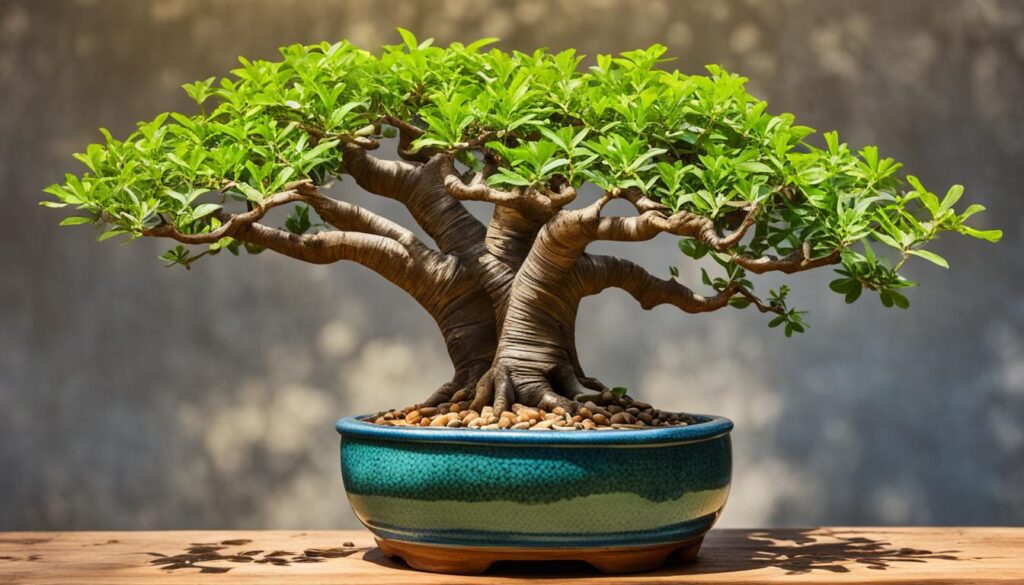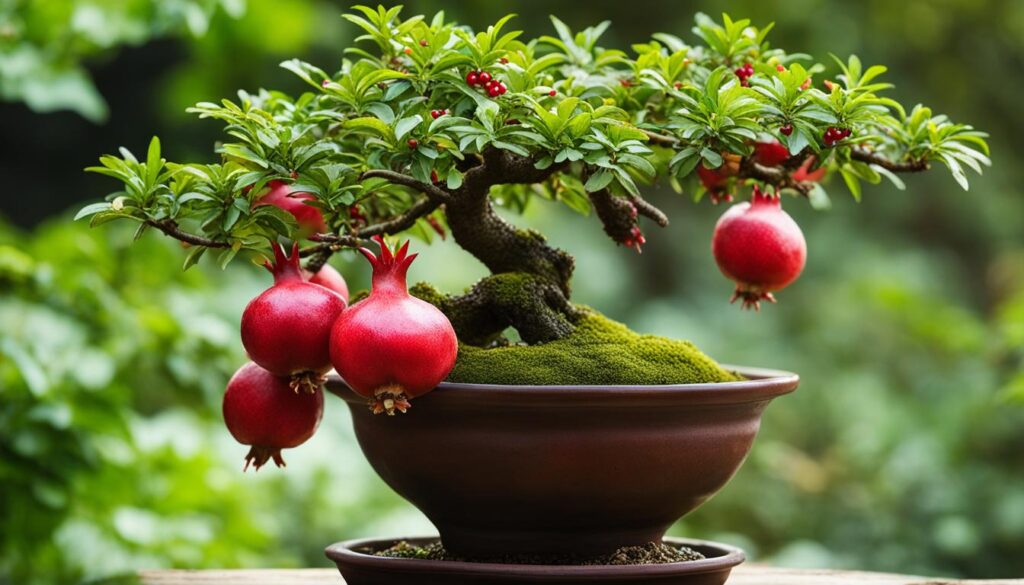Key Takeaways
ToggleCrespi’s iconic Ficus Bonsai

Age: Over 1000 Years 0ld
Location: Crespi, Italy
Situated in Crespi, Italy, this remarkable bonsai has become a beacon for enthusiasts worldwide. Its age surpasses generations, offering a unique connection to the history of bonsai. As you gaze upon its intricate branches and lush foliage, you can’t help but marvel at the commitment required to nurture such a magnificent living masterpiece.
The Ficus Bonsai at Crespi is more than a tree; it’s a living artifact, showcasing the rich tapestry of the bonsai tradition. Its roots delve deep into the soil, echoing the commitment of those who have cared for it throughout the centuries. The significance of this ancient tree extends beyond its physical form, reaching into the very soul of bonsai cultivation.
Old Juniper Bonsai Tree at Mansei-en, Japan

Age: Over 1000 Years old
Location: Omiya, Japan
Nestled in the heart of Japan, the Old Juniper Bonsai Tree at Mansei-en stands as a testament to the timeless artistry of bonsai cultivation. Imagine a tree that has witnessed centuries unfold, each branch telling a story of dedication and skilled craftsmanship.
This remarkable juniper bonsai, with its confirmed age, carries the weight of history with grace. Over the years, it has become a symbol of endurance and the delicate balance between nature and human hands. Its gnarled branches seem to whisper secrets of the past, making it a unique and revered entity in the world of bonsai.
Mansei-en, the custodian of this ancient treasure, plays a crucial role in preserving the essence of bonsai. The meticulous care and attention given to the Old Juniper Bonsai Tree reflect not only the horticultural expertise of the Japanese but also their deep cultural connection to these living works of art.
Shunka-en Nursery Bonsai Trees
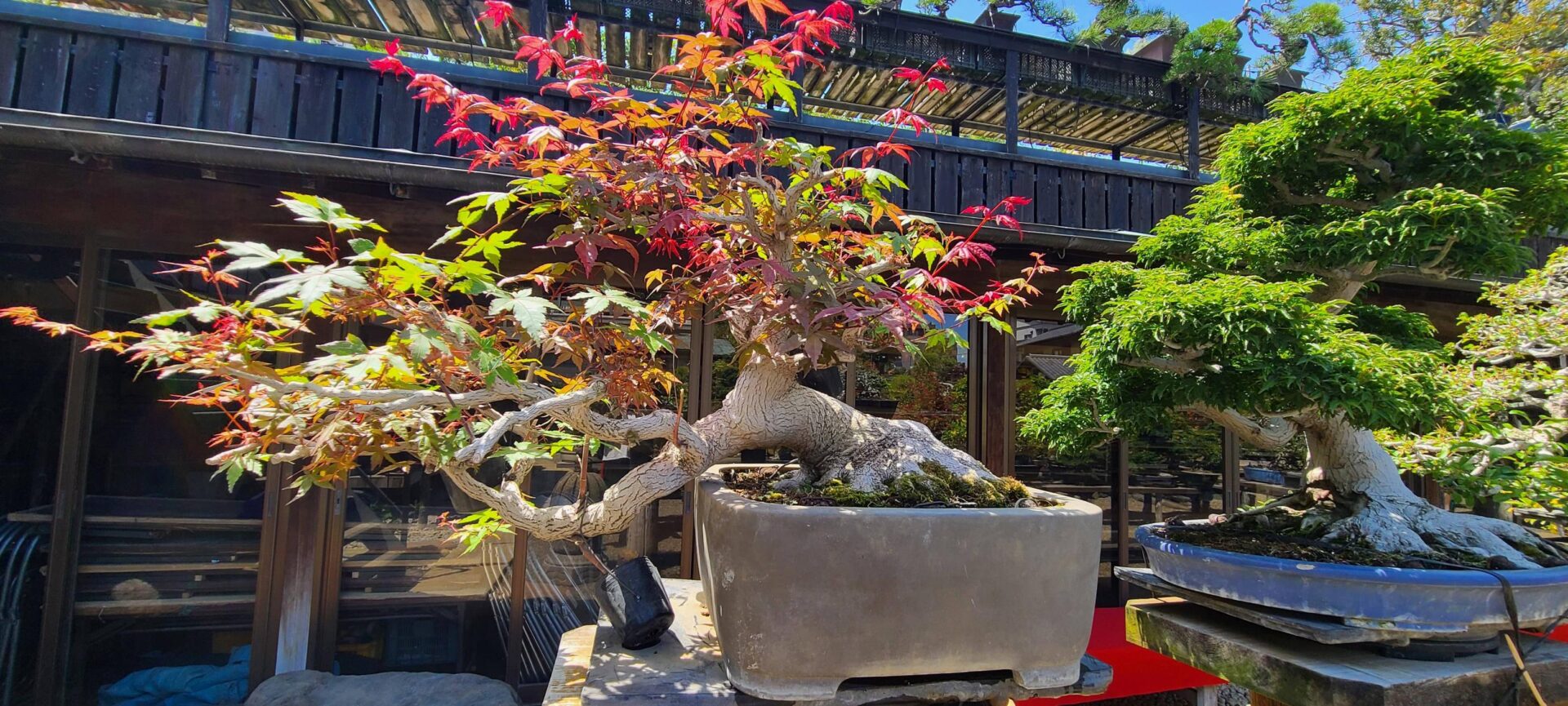
Age: Around 800 Years old
Location: Tokyo, Japan
Shunka-en Nursery, founded by the renowned bonsai artist Kunio Kobayashi, is home to some of the oldest bonsai trees in the world. Among these is a remarkable tree that is reported to be over 800 years old. This tree is a testament to the dedication and skill of Mr. Kobayashi, who has won the Prime Minister’s Award, the most prestigious prize in Japan, multiple times.
Shunka-en is not just a nursery, but also a museum dedicated to the art and culture of bonsai. It houses over 1,000 bonsai works on display, and attracts 50,000 visitors from all over the world every year. The museum offers a serene and traditional Japanese garden, where visitors can appreciate the beauty and harmony of these miniature trees.
In addition to showcasing bonsai, Shunka-en is also a place of learning. Mr. Kobayashi and his students offer bonsai courses every Sunday, where enthusiasts can learn the essential techniques of wiring and pruning. This dedication to teaching and promoting bonsai culture is a key part of Shunka-en’s mission.
The Japanese White Pine that Survived Hiroshima Bombing

Age: Around 400 Years Old
Location: National Arboretum, Washington, USA
The Japanese White Pine that survived the atomic bombing of Hiroshima holds immense historical and emotional significance. This bonsai tree, which is over 400 years old, was located within two miles of the epicenter of the atomic bomb dropped by American forces on Hiroshima. Despite the devastation, the tree survived, protected by a walled nursery.
The tree belonged to the Yamaki family, who had cared for it for five generations. In 1975, the family gifted the tree to the United States as a symbol of friendship and connection between the two cultures. The tree’s history was not widely known until 2001, when two grandchildren of bonsai master Masaru Yamaki visited the U.S. National Arboretum and shared the tree’s story.
Today, the Japanese White Pine stands in the U.S. National Arboretum, a living testament to history, resilience, and the enduring hope for peace.
Chabo-hiba Cypresses

Age: Around 250 Years Old
Location: Harvard University, USA
The Chabo-hiba Cypress, also known as the Hinoki Cypress, is a unique bonsai tree with distinct characteristics. It is known for its rugged trunks and compact scaled foliage. These trees are typically trained in a conical shape, resembling the image of a distant Mount Fuji. This meticulous training and the tree’s compact form make it stand out among bonsai trees.
The Chabo-hiba Cypress is believed to be between 150 and 275 years old. It is part of the Larz Anderson Collection of Japanese Dwarfed Trees at Harvard University’s Arnold Arboretum. Larz Anderson, who served as an ambassador to Japan, brought back a large collection of bonsai trees to the U.S. in 1913. This collection, including the Chabo-hiba Cypress, was later donated to the Arnold Arboretum.
The Chabo-hiba Cypress is not just a bonsai tree, but a living piece of history, embodying the spirit of horticultural collaboration and cultural exchange. It is a testament to the art of bonsai and the enduring beauty of nature.
Sandai Shogun no Matsu
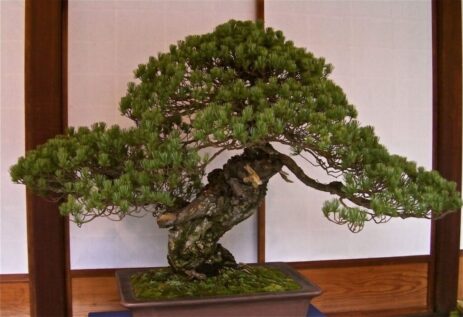
Age: Over 500 Years Old
Location: Tokyo imperial palace, Tokyo, Japan
The Sandai Shogun no Matsu, a five-needle pine bonsai, is a significant part of Japan’s national heritage. This bonsai tree is believed to be over 500 years old. It is named after Shogun Tokugawa Iemitsu, who received the tree when it was about 200 years old. Since then, the bonsai has been passed down from emperor to emperor.
This bonsai tree has seen the rise and fall of shoguns and emperors, expressing the spirit of Japan’s rich cultural legacy. It has witnessed the evolution of an entire nation and the passing of generations. Today, the Sandai Shogun no Matsu is displayed in the Tokyo Imperial Palace collection.
The Sandai Shogun no Matsu stands out due to its age, historical significance, and the meticulous care it has received over centuries. Its longevity and preservation are a testament to the art of bonsai and the enduring beauty of nature.
Akao Garden’s Red Pine

Age: Around 600 Years Old
Location: Atami, Japan
The Red Pine at Akao Garden, located in Atami, Japan, is a remarkable specimen in the world of bonsai. It is not only one of the oldest bonsai trees but it is also believed to be the largest.
This Red Pine is estimated to be 600 years old. Its grandeur is truly awe-inspiring, with a width of over 30 feet and a height of 16 feet. Despite its size, which is atypical for a bonsai, it still qualifies as a bonsai tree as it is contained in a pot.
The beauty and allure of this Red Pine lie in its age, size, and the meticulous care it has received over centuries. Its branches are so massive that extra support had to be added to hold up the main ones. This tree is a testament to the art of bonsai and the enduring beauty of nature.
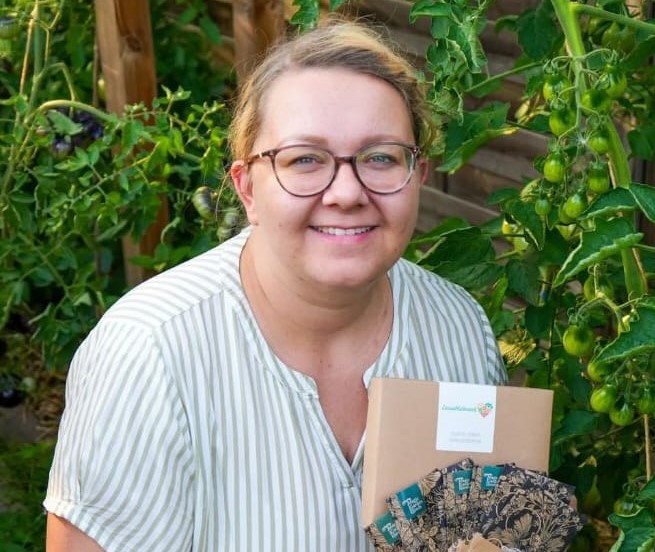
Karen Phillips, Bonsai expert and blogger. Read more about me here


